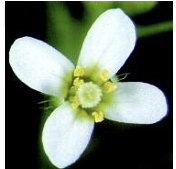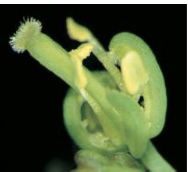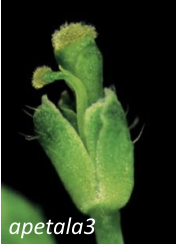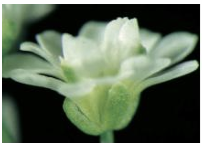Class 9
1/78
There's no tags or description
Looks like no tags are added yet.
Name | Mastery | Learn | Test | Matching | Spaced |
|---|
No study sessions yet.
79 Terms
Advantages of Asexual Reproduction:
Offspring have already adapted to the habitat, rapid colonization, and no mate needed.
Disadvantages of Asexual Reproduction:
Short distance, no genetic variation, and risk of losing all.
What type of reproduction do most plants use?
Sexual reproduction.
Advantages of Sexual Reproduction:
Genetic variation among offspring, may be more adapted to the habitat than parents, and increased chance of survival in different (changing) environments.
Disadvantages of Sexual Reproduction:
Often requires two parents to reproduce, requires a mechanism of pollen transfer, expensive reproductive structures, and offspring may be less adapted to the habitat.
What does the plant life cycle consist of?
Alternating haploid and diploid generations.
Haploid:
1N = gametophyte.
Diploid:
2N = sporophyte.
What is the haploid phase in animals?
Short-lived and unicellular (gametes).
What is the diploid phase in animals?
Longer-lived and multicellular.
What does meiosis produce in animals?
Gametes, they fuse immediately to restore the diploid state.
What does meiosis produce in plants?
Spores.
What are spores?
Haploid cells that divide by mitosis to produce a multicellular haploid organism (gametophyte).
What are gametes?
They fuse to form a diploid zygote that divides by mitosis to form a multicellular diploid organism (sporophyte).
What happens in alternation of generations?
A multicellular haploid phase alternates with a multicellular diploid phase.
What is the diploid generation?
Multicellular, called the sporophyte and produces spores.
What is the haploid generation?
Multicellular, called the gametophyte and produces gametes.
Gametophytes Through Evolution:
Has been reduced in size and significance.
Sporophytes Through Evolution:
Has increased in size and significance.
Why are embryophyta (land plants) distinct?
Thay have protection for the embryo in the sporophyte generation.
In bryophytes (mosses etc), the gametophyte is:
Nutritionally independent, larger, and longer lived than the sporophyte, and the sporophyte depends on the gametophyte for nutrition.
In vascular plants, the sporophyte is:
Nutritionally independent, larger and longer lived than the gametophyte, and the gametophyte depends on the sporophyte for nutrition.
How long have angiosperms dominated land?
100 million years.
What are the distinctive characteristics of angiosperms?
Flowers, fruits, and double fertilization.
Vegetative meristems are:
Indeterminate.
Floral meristems are:
Determinate.
When a plant reproduces, how do shoot meristems switch?
They switch from producing leaves to reproductive organs.
What are inflorescences?
How flowers are usually arranged, they differ in the number and arrangement of branches, the arrangement of flowers on the branches, etc.
What are the four types of organs a flower has?
Stamen, pistil, petal, and sepal.
How are the four types of floral organs arranged?
In concentric circles (whorls) from sepals, petals, stamens, and carpels (in to out).
What are parts of the flower?
Pedicel, receptacle, sepals (calyx), petals (corolla), stamens (filaments, anthers), and carpels (pistil, stigma, style, and ovary).
What does the pedicel attach?
The flower to the main stem.
What is the receptacle?
The site of attachment of four floral whorls.
What is the perianth?
The sepal (calyx) and petals (corolla).
What is a perfect flower?
Flowers have stamens and carpels (bisexual).
What is an imperfect flower?
Flowers lack stamens or carpels, unisexual.
What is a monoecious flower?
“Single house”, single-sex male and female flowers occur on the same plants (squashes).
What is a dioecious flower?
“Two houses”, male and female flowers are on different plants (papaya).
Which floral organs are nonreproductive (sterile)?
The sepals (calyx) and petals (corolla), the outer floral organs.
What are the sepals (calyx)?
The outer whorl, they protect other floral organs in the bud, maintain humidity, and may be photosynthetic or pigmented like petals.
What are the petals (corolla)?
Pigmented (visible light, UV), thin and delicate, they attract pollinators and may have marking (nectar guides) to orient pollinators.
What makes up the stamens?
The filament and anther.
What is a filament?
A stalk to elevate anthers.
What are the anthers?
They produce pollen.
What is pollen?
The male gametophyte.
What does meiosis in the anthers produce?
Microspores.
What does each microspore divide to form?
Tube cell, generative cell, and male gametophyte.
What does the tube cell do?
Grow the pollen tube.
What does the generative cell do?
Divide mitotically to form two sperm nuclei (gametes).
What is a male gametophyte?
A three-celled haploid generation.
How does pollen reach the female gamete?
It grows a tube through the carpel.
What does the pistil/carpel consist of?
Stigma, style, and ovary.
What is the stigma?
The upper surface of the pistil that receives pollen.
What is the style?
The stalk to elevate stigma.
What does the ovary produce?
Ovules.
What is a ovule?
A megaspore/female gametophyte + surrounding integuments (sporophyte tissue), develops into seed after fertilization.
What does the ovary develop into?
A fruit.
Where does meiosis occur?
In ovules, produces 4 haploid spores, 3 die and 1 (megaspore) survives.
What does the megaspore divide to form?
Divides 3 times by mitosis to form a female gametophyte (embryonic sac).
What makes up the embryonic sac?
The egg (gamete), 2 polar nuclei (in 1 central cell), and 5 other cell.
What is the female gametophyte?
The 7-celled 8-nucleate haploid generation.
What is pollination?
The transfer of pollen to the stigma.
How is pollen transferred?
Animals (birds, insects, bats), wind, pollen carried by wind (what causes allergies), and self-pollination.
Does pollination always lead to fertilization?
No.
What is required for the pollen to germinate on the stigma, the pollen tube to grow through the style into the ovary, and for the sperm cell to be released into the ovule?
Specific signals and interactions between the pollen and the pistil tissues.
What is a defining feature of angiosperms?
Double fertilization.
Fertilization of the egg cell produces:
The embryo.
Fertilization of the central cell produces:
The endosperm.
2N Zygote:
One sperm + egg.
3N Endosperm:
One sperm + 2 polar nuclei.

Wild Type (“normal”):
Carpels, stamens, petals, and sepals.

Class A Mutant:
Carpels, stamens, missing or stamen, and carpels.

Class B Mutant:
Carpels, carpels, sepals, and sepals.

Class C Mutant:
Petals, sepals, petals, and sepals.
Class A Genes:
Petals and sepals.
Class B Genes:
Stamens and petals.
Class C Genes:
Carpels and stamens.
What does the mutation of B and C genes result in?
Conversion of all organs to sepals.
What does the mutation of A, B, and C genes result in?
Indeterminate clusters of leaves, this is evidence that leaves are the “ground state” of organ formation from the shoot apical meristem, flower organs are modified leaves.